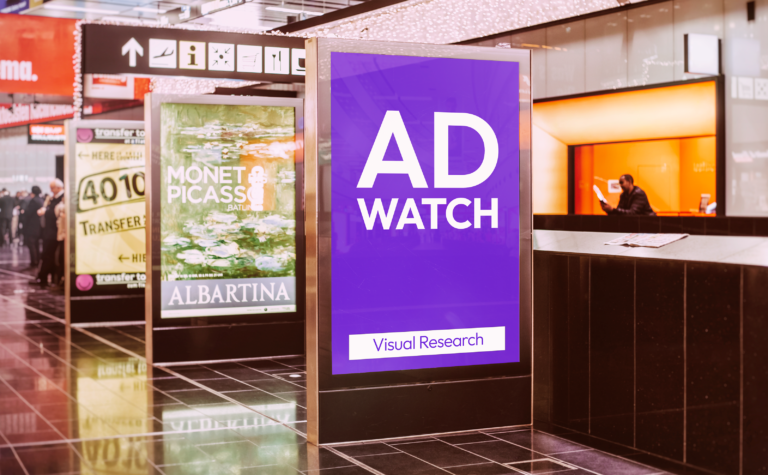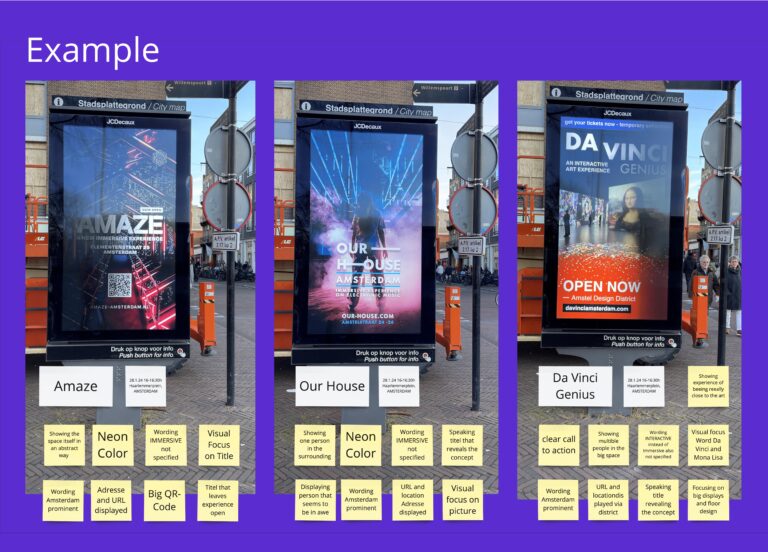Collecting advertisements in the physical space is the primary target of Ad Watch. Your field of research will most likely be displayed in an advertisement in digital and physical ways giving conclusions on how other designers and marketers focus and try to put attention to their products or services.
Going beyond the digital away from your desk and outside in your area can be beneficial, especially at the beginning of a project if you want to use visual research to collect knowledge about your field and spark inspiration.
“… a practice based not on the search for definitive answers to specific questions but on a critical approach to interrogate and understand the world around us.”
Quote on the definition of Visual Research from the book Visual Research by Bestley and McNeil (2022, p.10)
Get an insight into how a topic is displayed in public (coherent/noncoherent) in your city/country/area.
Here are some of the broader benefits:
On a more personal note going outside and observing your surroundings can help open up to new inspiration by slowing down and being more sensitive to small details in your creative process.
Duration: From one day to multiple weeks depending if you see it as an iterative process.
Requirements: Walking, driving, or biking and observing your surroundings, taking photos, and collecting insights. Traveling to other countries or places could be helpful from one to multiple people.
Keep in mind: This is a snapshot of reality at a particular time and place. Be aware of this and treat it as such. Always document the time and location of each advertisement for context.
In the Master Digital Design student project ‘unhinder’, we created an immersive experience insight the Immersive Lab at Amsterdam University of Applied Science targeting club culture, music, and dancing. Researching other immersive experiences was an initial starting point of our design process. Ad Watching made us aware of immersive experiences in Amsterdam for field trips, the use of the word immersive, and analyzing trends and standards in this to us unknown field of design.
Ad Watch can be carried out qualitatively or quantitatively and doesn’t have limitations but should spark further ways of research for your specific goal. Such as:
Longitudinal Study: Compare ads over time, for example, the beginning of a project with the end of your project.
Customer Reviews: Look for customer reviews on advertised topics and include them in your research
Interviews: Show advertisements to people and interview them to get deeper insights into the perception
Market Research: Understanding consumer behavior and market trends through data analysis.
Media Analysis: Examining the reach, frequency, and effectiveness of advertisements across different media channels.
—-
Bestley, R., & McNeil, P. (2022). Visual research: An Introduction to Research Methods in Graphic Design. Bloomsbury Publishing.
I am a passionate Product Designer and Researcher with a heart for users and their needs.
I hope you found this article insightful!
Let’s connect on Linkedin
Elisabeth Adelsberger

